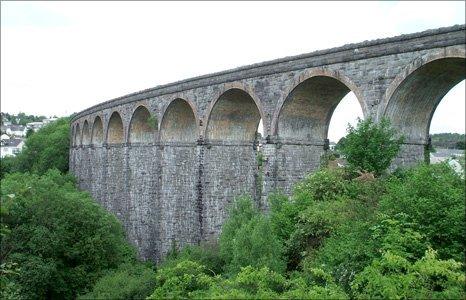Merthyr Tydfil to bid for Unesco world heritage status
- Published

Cefn Viaduct, noted for its gentle curve, was built in 1866 to carry the Brecon and Merthyr railway over the river Taff at Pontycapel
Merthyr Tydfil wants to see its industrial past recognised as world class by the United Nations heritage body Unesco.
The council is to put Cyfarthfa Heritage Area on Unesco's list of sites bidding for global classification.
Sited close to reserves of iron ore, coal, limestone and water, Merthyr developed early iron industries.
World Heritage Sites are chosen for their outstanding universal value to culture, history or science.
Wales currently has three World Heritage Sites: the castles and town walls of King Edward, in Gwynedd, the Blaenavon industrial landscape, in Blaenau Gwent, and the Pontcysyllte Aqueduct and Canal, in Wrexham.
'Human genius'
Last week, the slate industry of north Wales submitted its own bid to land Unesco World Heritage status, in a process that can take up to 10 years.
Merthyr council said the 18th and 19th Century engineering "world firsts" in the town were "considered masterpieces of human genius".
It said they include:
the first iron railway bridge, built in 1793
the site of the first working steam-hauled locomotive and first constructed railway tunnel by Richard Trevithick in 1804
Cefn Viaduct in 1868 and related watercourses and canals
Councillor Derek Games, Merthyr Tydfil Heritage Champion, said: "It is vitally important we recall Merthyr Tydfil in the 1800s when it was described as the iron capital of the world, with its four iron and steel works - Cyfarthfa, Penydarren, Dowlais, and Plymouth.
"The original Cyfarthfa Furnace, once restored, has the potential to attract visitors from around the world.
"World Heritage status will give worldwide recognition to the heritage of Merthyr Tydfil."
- Published11 June 2010